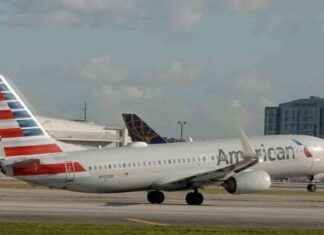MADRID, 19 May. (EUROPA PRESS) –
Ferrovial, the construction company headed by the del Pino family, last week became the first listed company belonging to the Ibex 35 to debut on the New York stock market through the Nasdaq, after already listing in Amsterdam (Netherlands).
Specifically, the company’s shares made their debut last Thursday, May 9, on the US Stock Exchange with a rise of 5%, going from $38 per share at the start to $40 at the close. This week, the construction company’s shares have oscillated around that range.
On the other hand, it should be noted that the negotiation in New York was limited to 3.8 million dollars (3.5 million euros), that is, 88% less than the 30.7 million euros that moved in Madrid that day, a trend of thin trading volume that has also extended to the company’s first full week on the Nasdaq.
Following Ferrovial and its new stock market debut, market analysts consulted by Europa Press have expressed their doubts about whether other companies could follow the example of the Del Pino family when it comes to listing in the United States.
XTB analyst Javier Cabrera has indicated that he does not see any other company that can make this move, although he has acknowledged that this could vary depending on Ferrovial’s stock market fortunes: “If it is successful for Ferrovial, we could see other companies imitating them in the future.
In a similar vein, the head of analysis at the securities company Activotrade, Juan José del Valle, has pointed out that they are not aware or knowledgeable about other companies that are embarking on following Ferrovial’s path, but he has pointed out that another case “perfectly comparable” could be ACS, since more than 60% of its sales at the end of 2023 came from the North American country.
Precisely, the president of ACS, Florentino Pérez, ruled out last week that it is “right now” among his plans for the company’s shares to also be listed on the United States Stock Exchange.
This was stated during his participation in the shareholders’ meeting of his construction company, in response to a question from a shareholder, who recalled the extensive presence and business that ACS has in the United States.
“These are things that we are not contemplating right now, when we contemplate them we will bring them here (to the meeting),” the businessman limited himself to saying before the shareholders gathered in an IFEMA Madrid auditorium.
Back with Ferrovial, it is worth noting that a good part of the business volume it has in the United States has finally been a compelling argument to explain the company’s movement towards the New York stock market.
In fact, this concentration of Ferrovial’s business in the United States could escalate with more than 90% of the investments committed for the period 2023-2027 in this geographic area, according to del Valle, who has stated that it makes sense “to look for a North American investor to a company that plans to concentrate its business even more in the United States.
Linked to this, a report from the S agency
Cabrera, who joins these financial arguments, has also pointed out that “the company decided to go on the Nasdaq because of the exposure that this could give it.” Furthermore, he has stressed this source, from now on “it may be eligible” for United States indices, such as Russell or others.
The company’s directors have already pointed out that they anticipate that over the next few years the listing in the United States will gain prominence, even leaving the Spanish listing behind.
For Cabrera, this is the disadvantage that shares listed in Amsterdam or on the Spanish Stock Exchange could face by losing “some liquidity, which can make them less attractive for some investors.”
However, del Valle recalled that in terms of liquidity there is still “a long way” to go because, today, with the company already having shares listed on three different stock exchanges, more than 90% of the volume is being carried out in the Spanish market, a fact that takes us back to the low trading volume in the United States.
Going into detail about Ferrovial’s debut on the Nasdaq, Cabrera pointed out that it was carried out through a ‘listing’, that is, that they are Ferrovial shares that already existed and that can now be purchased in the American market.
In that sense, he clarified that it must be taken into account that American investors could already buy Ferrovial ADRs, which are securities issued by depositary banks and whose underlying assets are Ferrovial shares.
Therefore, in this way the shares were not held directly, but rather a title with the share as underlying. With this exit, Cabrera has stressed, investors will be able to buy the shares directly in the American market.
With this new route, investors based in the United States will be able to access Ferrovial’s listed asset itself, which has a market capitalization of around 27.5 billion euros, which places it as the seventh largest value in the Spanish Ibex 35.
Juan José del Valle (Activotrade) recalled that in favor of the equation of listing in the United States are elements such as the exchange rate, since the euro is a stronger currency than the dollar (in recent weeks, the euro is trading around 1.07 and 1.08 dollars).
“The advantage for a North American investor of being able to buy the construction company’s securities denominated in dollars,” said the Activotrade executive, lies in avoiding “a downward risk in the case of the community currency (euro), which has fallen about a third of its value in relation to the dollar since the last great crisis in 2008”.







